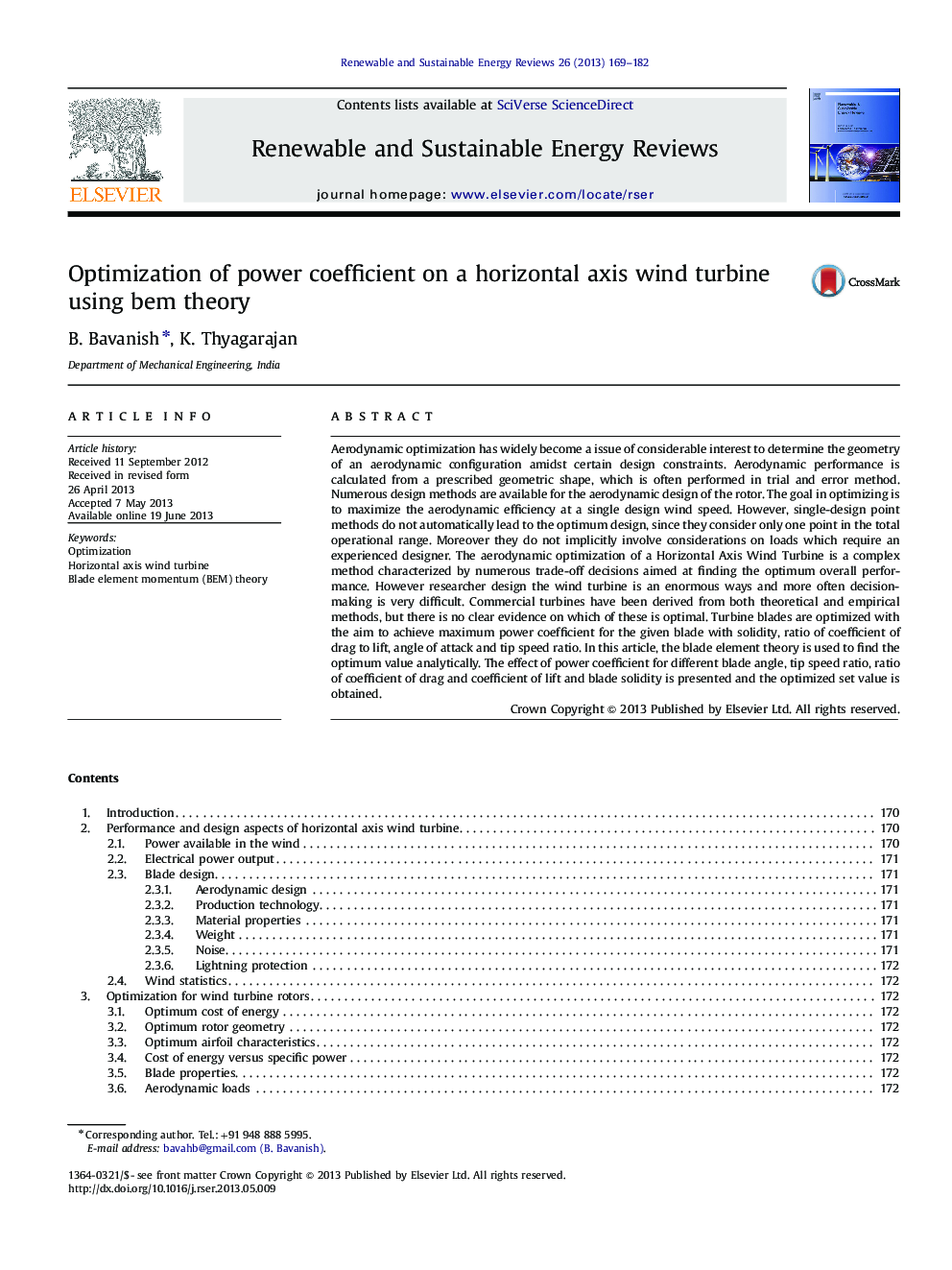| Article ID | Journal | Published Year | Pages | File Type |
|---|---|---|---|---|
| 8121292 | Renewable and Sustainable Energy Reviews | 2013 | 14 Pages |
Abstract
Aerodynamic optimization has widely become a issue of considerable interest to determine the geometry of an aerodynamic configuration amidst certain design constraints. Aerodynamic performance is calculated from a prescribed geometric shape, which is often performed in trial and error method. Numerous design methods are available for the aerodynamic design of the rotor. The goal in optimizing is to maximize the aerodynamic efficiency at a single design wind speed. However, single-design point methods do not automatically lead to the optimum design, since they consider only one point in the total operational range. Moreover they do not implicitly involve considerations on loads which require an experienced designer. The aerodynamic optimization of a Horizontal Axis Wind Turbine is a complex method characterized by numerous trade-off decisions aimed at finding the optimum overall performance. However researcher design the wind turbine is an enormous ways and more often decision-making is very difficult. Commercial turbines have been derived from both theoretical and empirical methods, but there is no clear evidence on which of these is optimal. Turbine blades are optimized with the aim to achieve maximum power coefficient for the given blade with solidity, ratio of coefficient of drag to lift, angle of attack and tip speed ratio. In this article, the blade element theory is used to find the optimum value analytically. The effect of power coefficient for different blade angle, tip speed ratio, ratio of coefficient of drag and coefficient of lift and blade solidity is presented and the optimized set value is obtained.
Related Topics
Physical Sciences and Engineering
Energy
Renewable Energy, Sustainability and the Environment
Authors
B. Bavanish, K. Thyagarajan,
